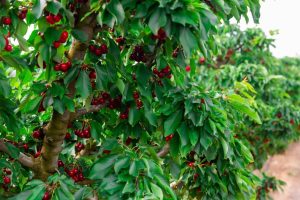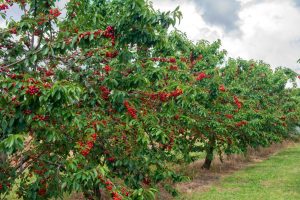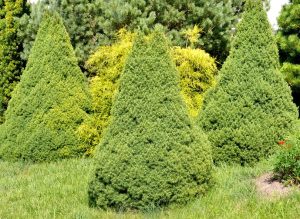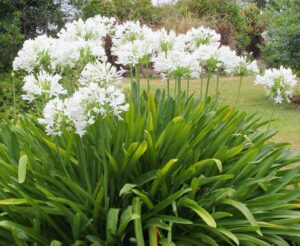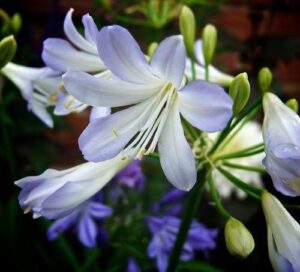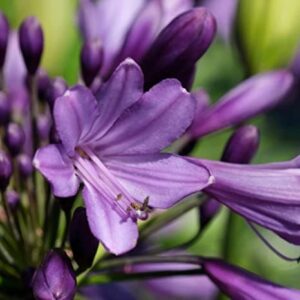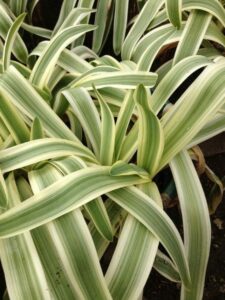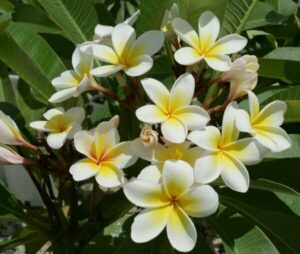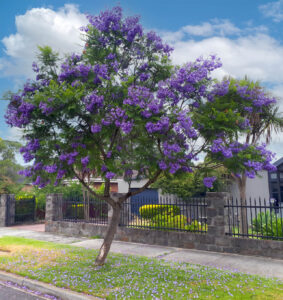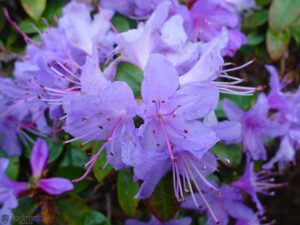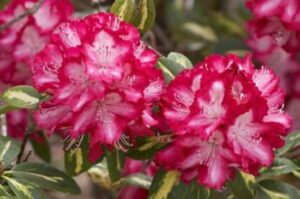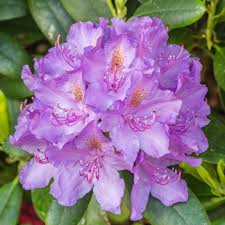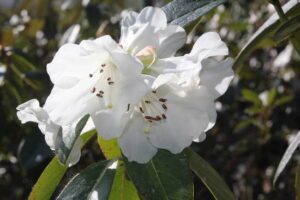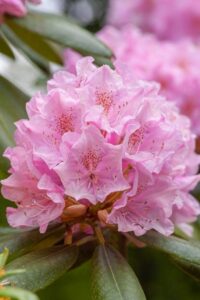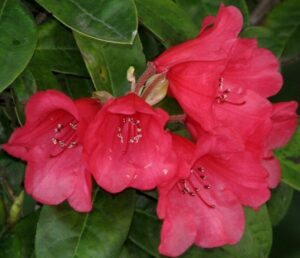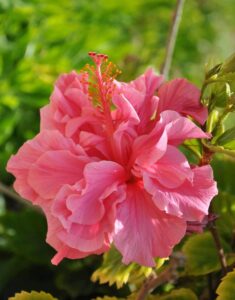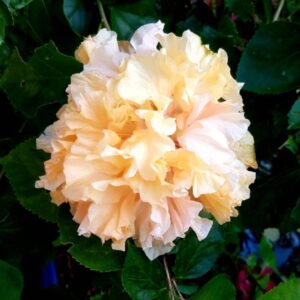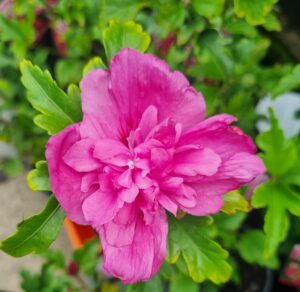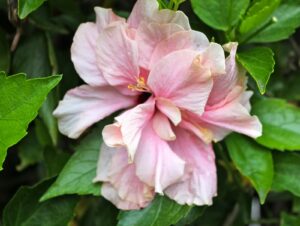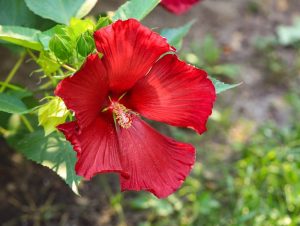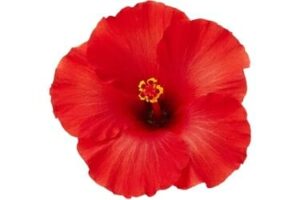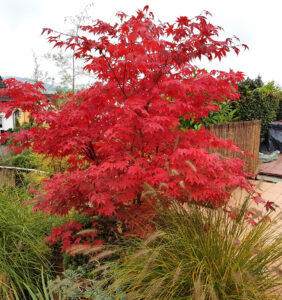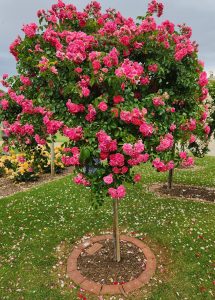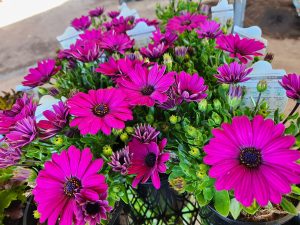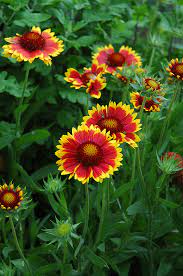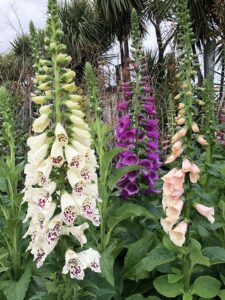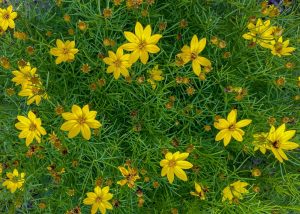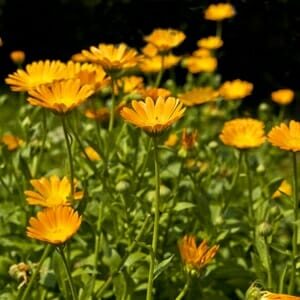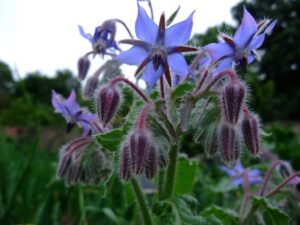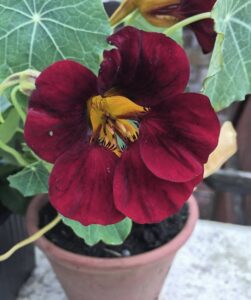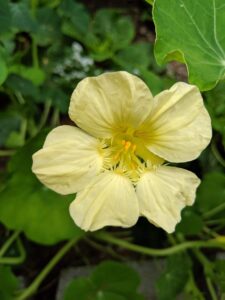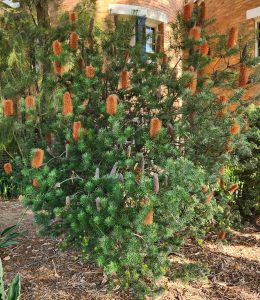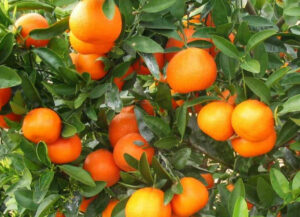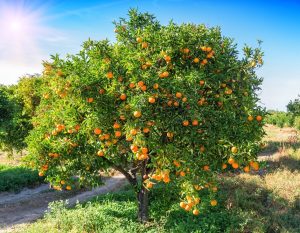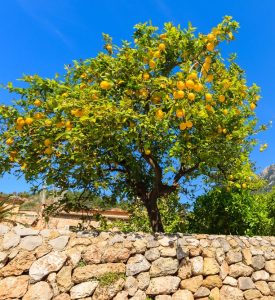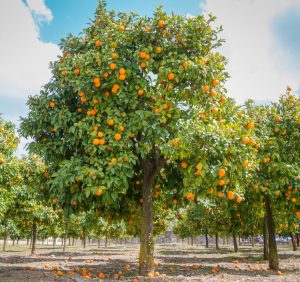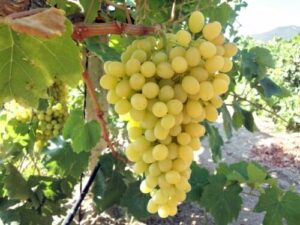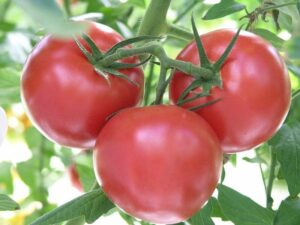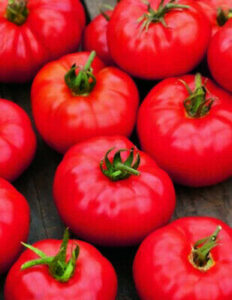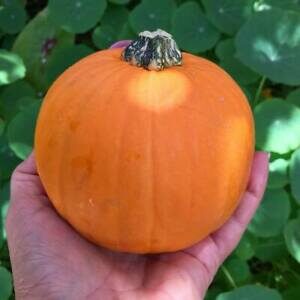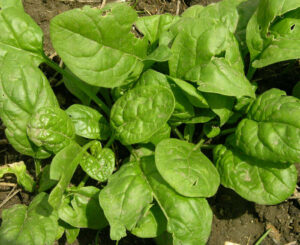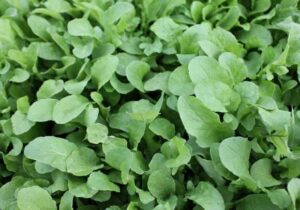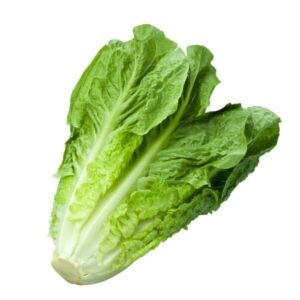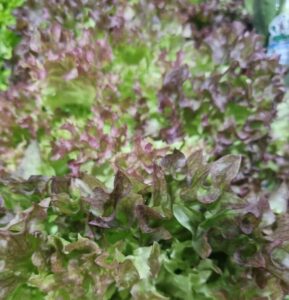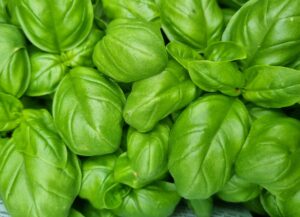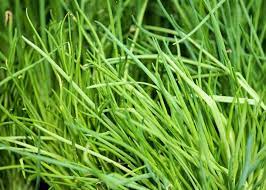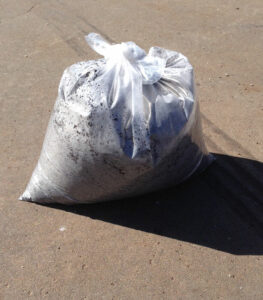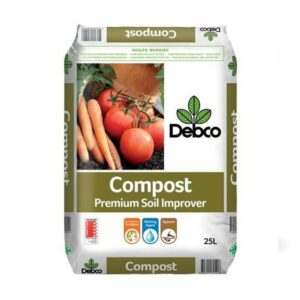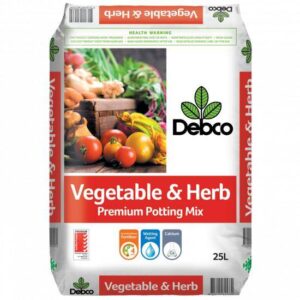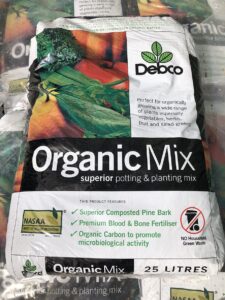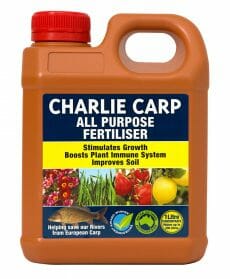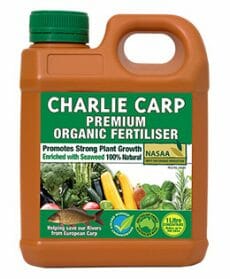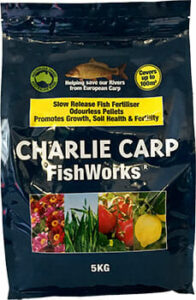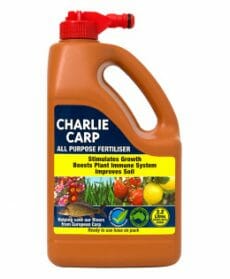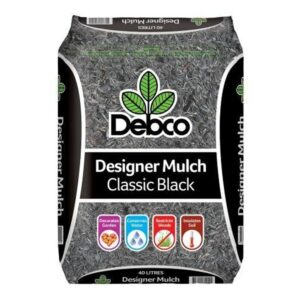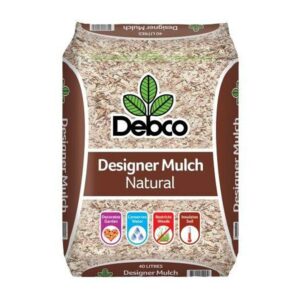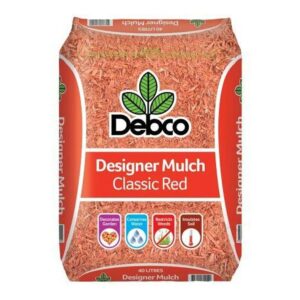
December in the Garden 2021!
Hello Hello, dear gardening friends! December officially marks the start of summer here in Victoria and is the most exciting month of the year! Long summer evenings, garden parties, friends over for dinner, school holidays, vacation home getaways, and especially Christmas and New Year celebrations!  There are beautiful flowers blooming everywhere right now such as Jacarandas, Hydrangeas, Flame Trees, Daisies, and so many others, keeping the bees buzzing around all day long! The veggie patches are starting to provide us with the first zucchinis, tomatoes, and peppers, to cook some homegrown goodness! Fruit trees such as raspberries, blueberries, cherries, and mulberries are loaded with delicious fruit to tempt our taste buds!
There are beautiful flowers blooming everywhere right now such as Jacarandas, Hydrangeas, Flame Trees, Daisies, and so many others, keeping the bees buzzing around all day long! The veggie patches are starting to provide us with the first zucchinis, tomatoes, and peppers, to cook some homegrown goodness! Fruit trees such as raspberries, blueberries, cherries, and mulberries are loaded with delicious fruit to tempt our taste buds!
Garden Designs are back!
There are very limited spaces available. Here are the available timeslots that you can choose from after filling out the Garden Design Questionnaire.
- Monday morning 8:30am to 11.30am
- Friday afternoon 3:30pm to 5:30pm
- Saturday 8.30am- 12.30pm , 1.30pm-5.30pm
- Sunday 8.30am- 12.30pm , 1.30pm-5.30pm
Click here to read more about Garden Designs!
⭐Spend over $300 and get Free Delivery to Metro Melbourne and major regional centers!
Cherries
It is the season for delicious local cherries and they taste amazing. Have you ever considered growing your own? They are so easy to grow and they taste even better when harvested and eaten fresh! Make sure to cover them with a net, because the birds love them too!
Christmas Trees & Gift Vouchers!
🎄Potted Christmas Trees are in store Now!🎁🎅 If you prefer the look, feel, and smell of a real tree and if you can’t bear the thought of cutting down a tree just to use it as a decoration, why not use a live potted Christmas tree or plant!? We have a lovely selection of Pines and Spruces that you can use as your live Christmas tree for the next 10 years! They are slow-growing, easy to maintain, and can be kept in pots for a long time!
Agapanthus
Agapanthus is a very hardy and popular strappy leaved plant in Australia. They have lovely light green leaves and tall floral displays in summer. There are many varieties available, from white, mauve, blue, pink, and even black. Great for border plantings, pots or to soften some harsh edging in the garden. Make sure to deadhead them to prevent seed spreading!
Click here to read the agapanthus factsheet and see the 20 varieties we have in store.
Bougainvillea
Bougainvilleas are tropical vine-like shrubs that are quite drought tolerant, love the sun, and pack a huge punch of color. plants are vigorous growers that can become overgrown if not kept in check, but they offer a dazzling color show!
Frangipani
Frangipanis have to be the ultimate tropical plant. They evoke thoughts of sunny blue skies, relaxing by a pool. They have beautiful flowers with a delightful fragrance. Being small trees that make excellent feature trees with their striking umbrella shape. They have small noninvasive roots they can be planted near buildings and swimming pools without any problems. They also do very well in pots. Frangipanis mostly flowers from summer to autumn and come in shades of white, yellow, pink, and red!
Jacaranda
The Jacaranda tree puts on a breathtaking floral display. Its vivid lilac-blue clusters of trumpet-shaped blossoms appear in the summer, later falling to the earth carpeting the ground with a mass of color. It is said that if you are walking underneath the Jacaranda tree and one of the trumpet blossoms falls on your head you will be favored by fortune.!
Rhododendron
Prized for their glossy green foliage and showy clusters of blooms, these fabulous plants are especially suited to shady areas of the garden. We have a wide variety of colors in store!
Azalea
These are thick and leathery in appearance, often deep green in color and extremely luscious. If you set these gorgeous flowers in the right conditions, they require little ongoing care and will bloom abundantly.
Hibiscus
Hibiscus plants are known for their large, colorful flowers. These blossoms can make a fantastic addition to any home or garden. They flower profusely and come in a big variety of colours.
Maples
We have a fantastic MAPLE SHOW happening at the nursery with over 20 varieties of maples of various shapes, colors, and sizes! This is a great time to choose your maple as they are at their best right now, putting on an amazing display, with their spectacular array of foliage types and colors.
Roses
Most roses are blooming beautifully at this time of the year. Now is a great time to choose which one is your favorite in terms of color and scent, so make sure you check out our range of roses in full bloom now. It is also a good time to feed your roses with some balanced, bloom, or rose fertilizer. Keep an eye out for aphids that love to feed on the fresh new growth. 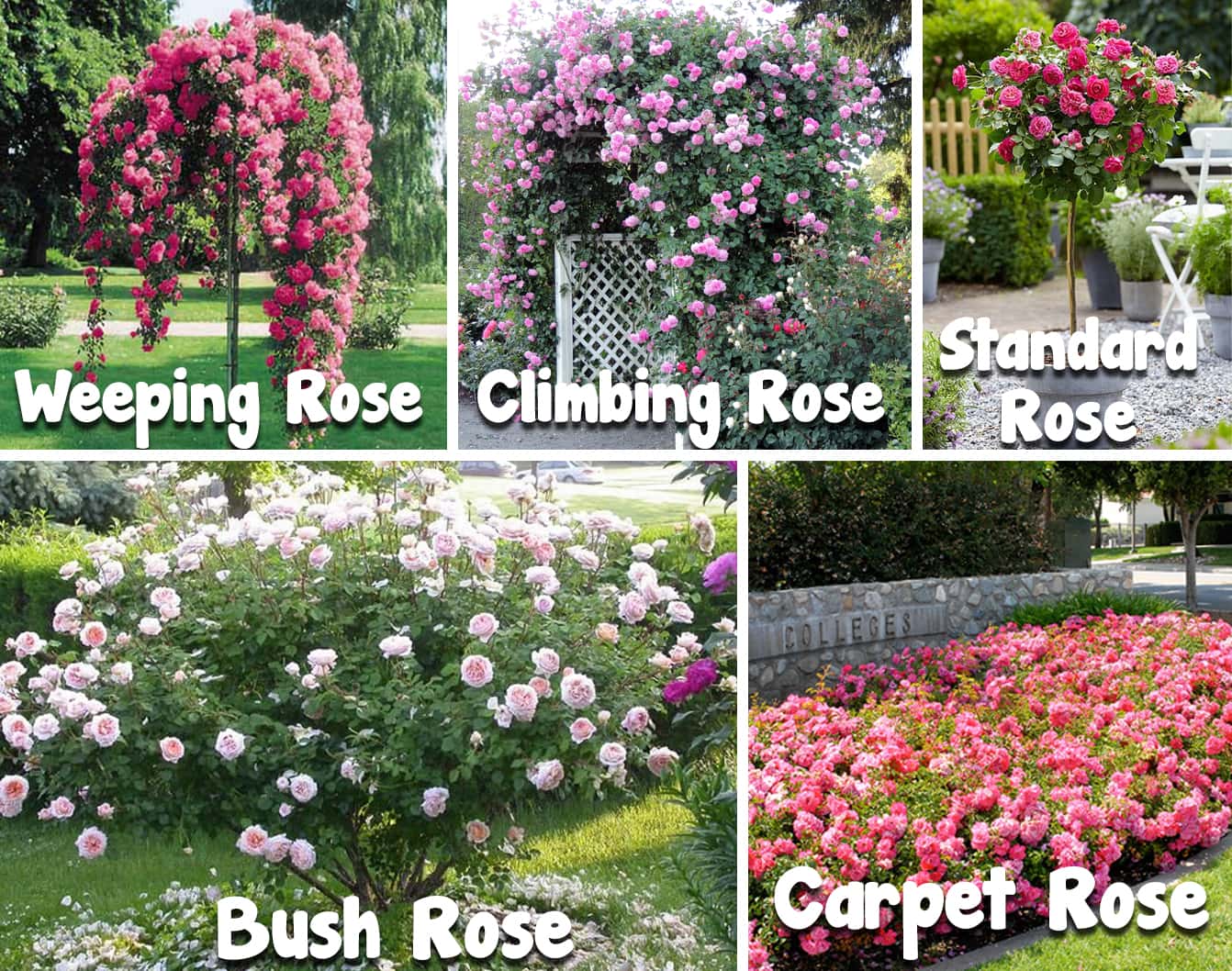 A good tip for more blooms on your roses is to dead-head the spent flowers regularly as this encourages more flowers. Avoid overhead watering as this can cause fungal problems. Watering early in the morning is better than in the evening. Once established, roses are quite drought hardy so water deeply only every so often. They are available in several forms such as bush form, climbing form, carpet roses, weeping roses and as standard (ball on a stick).
A good tip for more blooms on your roses is to dead-head the spent flowers regularly as this encourages more flowers. Avoid overhead watering as this can cause fungal problems. Watering early in the morning is better than in the evening. Once established, roses are quite drought hardy so water deeply only every so often. They are available in several forms such as bush form, climbing form, carpet roses, weeping roses and as standard (ball on a stick).
Flowers
• We have a fantastic selection of perennial flowering plants in store right now that are already flowering or just about to flower. You can easily plant these in your garden to make it pop with interesting textures and colors all Summer long.
• Companion Flower: Nasturtiums and marigolds are the best companions for Summer tomatoes and capsicums, as they deter many pests such as aphids and slugs.
Native Gardens
Native plants are very popular right now as they can easily be included in any type of garden. Native plants have so many advantages as they have lower maintenance requirements, are easy to grow, and quite hardy. They require less water and are wildlife-friendly. If you want a fully Australian native landscape, then a natural design and layout work best. Crushed granite on curved fluid pathways, timber sleepers for edging beds, and rustic garden sculptures all fit together very well. The Facebook page Australian Native Plant Enthusiasts forum is great for some native plant inspiration and one particular garden that always catches my attention is the Rosella Rise Native Garden of Deb MC. It has such a beautiful combination of plants, colors, and textures that it would inspire anyone to start a native garden! Be sure to click on the link to see more of that amazing Australian Native garden. 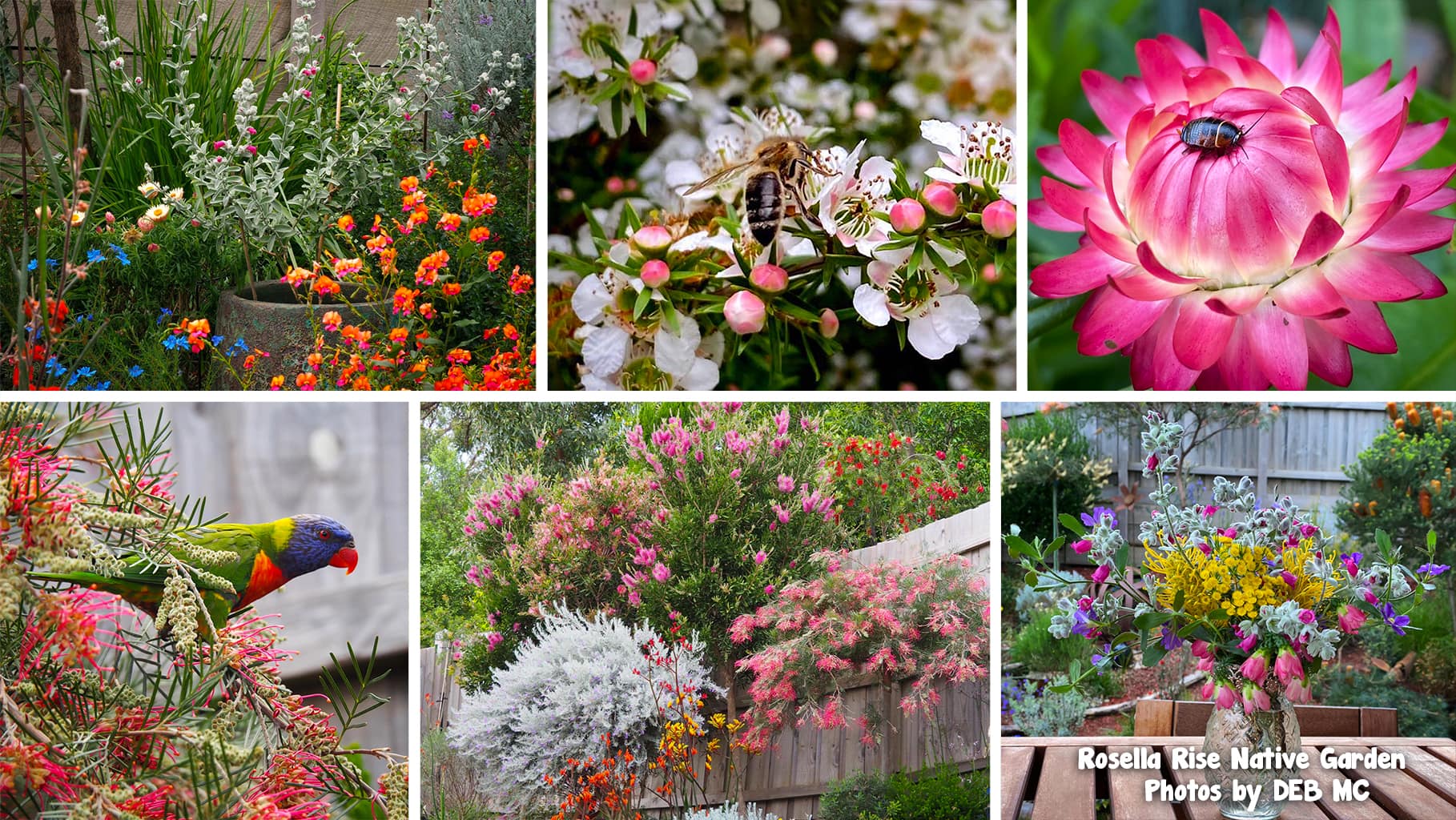 To create such a paradise, you can use a variety of grasses, desert plants, shrubs, ground cover, succulents, herbs, food plants, fruit and berries to create a diverse Australian native garden.
To create such a paradise, you can use a variety of grasses, desert plants, shrubs, ground cover, succulents, herbs, food plants, fruit and berries to create a diverse Australian native garden.
Fruits
Going into your garden, picking your own fruit, and enjoying them as fresh as they can be, is really a special feeling. If you choose a dwarf variety, you do not always need much space for them, as they are happy to grow in big pots and you can trim them to your preferred size. Now if you have space, by all means, plant a full-size variety and put them in the ground, and let them grow into bountiful monsters! You could then perhaps exchange or sell your surplus produce!
• Citrus plants. We have a great variety of 4L pots that are on sale right now! Citrus trees have been hard to get and in high demand this year, but this batch is new. These are fantastic varieties that were originally destined for Victorian fruit farms, so you know they are born to produce fruit, plus they are very affordable.
• Berries. Here is a great selection of the most popular and rare varieties, ideal for small spaces. These are in limited quantities, so better hurry up.
• Other fruits. Here are some less common fruits that you will rarely find in supermarkets!
Veggies, herbs, and Greens!
• Summer/Spring veggies such as tomato, peppers, squash, eggplants, zucchini, chilies, and basil can now be safely planted out in the ground! It is warm enough for them to grow beautifully. Remember to water them in properly with some seaweed fertilizers, which will help them settle in their new spot. See the full list here.
• Before planting your summer crops, dig in a generous amount of compost and manure in your veggie patch as these plants are quite heavy feeders. If you have experienced blossom end rot on your tomatoes in the past, it could be that your soil is deficient in calcium, and adding some garden lime will fix this issue. Just be aware that garden lime also raises the pH level of soils high in acidity, to make them more alkaline.
• Leafy greens such as lettuce, spinach, rocket, endive, silverbeet, mustard greens, and celery will all grow well in the garden right now until the early hot days of Summer are here. If you have limited space, you may want to favor Summer veggies instead and leave the leafy greens for the cooler months. You can also get creative and plant lettuce/rocket under or around your tomatoes/capsicums as they usually have shallow root systems that will not interfere too much. Planting them every couple of weeks will ensure a steady supply. See full list here.
• Culinary herbs are really easy to grow and can be grown in pots on your balcony or your patio. They will grow well in shaded, partly shaded, and sunny spots. You can harvest them and they will simply grow back. You can also chop them up, dry them and create your own mixed herbs for later use. Once you start planting your own herbs, you will never buy them at the supermarket again.
Soil, Fertilising, and Mulching
• For your veggie patch, if you have very poor soil, mix in generous amounts of rich compost, manure, and also some blood and bone meal. If your soil is already quite good, instead of turning it over, try top dressing. Turning the soil over when you already have healthy soil will disturb the delicate worm and microbial systems, which take time to build and are important for good plant development.
• Improve the growth, health, and yield of your plants by nurturing the soil as an alternative to using fertilizers. You can do that by restoring the beneficial microbial activity in your soil with some compost tea.
• Put some rich compost or well-aged manure around your fruit trees, to give them the well-needed boost for the Summer fruiting season.
• It is best to give some liquid feed to Summer flowering annuals every couple of weeks with a complete liquid fertilizer, to encourage healthy and vigorous new growth. You can also add some slow-release granular fertilizer that will feed your plants over a period of 3 to 6 months.
• When the summer heat comes round, it is important to have a nice thick layer of mulch on your soil to keep some moisture in the ground and also keep the roots of your plants cool. This will reduce the frequency of watering and prevent your plants to go through heat and drought stress. If you are putting mulch for the first time, make sure to choose the right ones as they change the PH of the soil when they break down. Pine bark mulch creates acidity when breaking down, so it is perfect for Azaleas or Camellias, whereas straw or sugarcane are recommended for veggie beds. Do not put mulch too close to the stems but rather around it, as this will encourage the roots to grow outwards to find water and make them stronger. Also, make sure to give the soil a good soak before mulching. When watering over mulch, it needs some extra water to make sure it penetrates into the soil.
Dead-heading and Pruning
After the beautiful first spring blooms, many of the flowering perennials are now covered with spent flowers, which are busy producing seeds inside. Some plants have a big flush of flowers at once, such as catmint, while others flower more consistently over the flowering period, such as daisies. The longer you leave spent blooms on the plant, the more resources or nutrients they utilize to produce seeds, and the plant will feel that it has completed its life cycle, i.e producing seeds to ensure the next generation. The best thing to do is to remove spent blooms as soon as the flower petals shrivel up. This will encourage more flowers to pop out. 
Pests & Disease
Now that there are lots of new shoots and seedlings, coupled with some warm weather and a few showers here and there, there will be more insects in the garden. The humid weather is perfect for them to proliferate, feed, and cause damage to plants.
• Aphids, thrips, and mites. With the warm weather, these sap-sucking insects find their way into our garden to feast on all the new growth. If there are not too many, you can leave them to help build the beneficial insect population that will then take care of the bad bugs for you later on. Adult aphids eat thrips and mites and ladybugs also eat aphids, thrips, mites, and whitefly If you have an infestation, on the other hand, you can make some homemade aphid spray to apply under the leaves of affected plants. Mix 2 tsp vegetable oil, 1 tsp dishwashing liquid, and some garlic cloves crushed, mixed in 1lt of water, and left to infuse overnight. This is completely safe for other beneficial insects. Also, think of planting some beneficial insect plants that will attract ladybirds and they will take care of aphids for you. A favorite plant for ladybirds is the Angelica herb.  • For ants you could sprinkle some diatomaceous earth on the ground where there is a lot of ant activity but only when it is dry. You will have to reapply it after it has rained. It is a natural organic control method that will not harm other insects.
• For ants you could sprinkle some diatomaceous earth on the ground where there is a lot of ant activity but only when it is dry. You will have to reapply it after it has rained. It is a natural organic control method that will not harm other insects.
• Azalea Lace Bug damage to azaleas normally occurs on the leaves and will look like silvery, white, or yellow spots. This is caused by these azalea insects, literally sucking small sections of the leaf dry and killing that section of the leaf. As these azalea leaf pests move on across the leaf, more and more spots will appear. These azalea insect problems are best avoided in the first place. The azalea lace bug tends to attack plants that are already weakened due to poor fertilizing or watering, so make sure to take proper care of your plants.  If your azalea shrub is already infested with these azalea leaf pests, you can try one of two methods for getting rid of them. The first is chemical controls and the other is organic control. Chemical control involves using insecticidal soaps (some of which are organic). Most off-the-shelf insecticides will effectively kill azalea lace bugs. For organic control of these azalea insects, you can try several methods. The first method to try is to spray the plant down with a sprayer on the hose. This can knock the pests of the plant and disorient them enough to prevent re-infestation. • Codling Moth attacks Apples and Pears. The moth lays its eggs on leaves and immature fruit as flowering finishes. The hatching caterpillars then burrow into the fruit and eat it from the inside. Yates Success Ultra is a good product to control these. You can also use organic control methods such as neem oil or even physical barriers such as fruit bags. Welcoming beneficial insects in your garden will also help with the control of codling moths.
If your azalea shrub is already infested with these azalea leaf pests, you can try one of two methods for getting rid of them. The first is chemical controls and the other is organic control. Chemical control involves using insecticidal soaps (some of which are organic). Most off-the-shelf insecticides will effectively kill azalea lace bugs. For organic control of these azalea insects, you can try several methods. The first method to try is to spray the plant down with a sprayer on the hose. This can knock the pests of the plant and disorient them enough to prevent re-infestation. • Codling Moth attacks Apples and Pears. The moth lays its eggs on leaves and immature fruit as flowering finishes. The hatching caterpillars then burrow into the fruit and eat it from the inside. Yates Success Ultra is a good product to control these. You can also use organic control methods such as neem oil or even physical barriers such as fruit bags. Welcoming beneficial insects in your garden will also help with the control of codling moths.  • Keep an eye out on your Rose plants for common diseases such as black spot, rust, and mildew. If you have noticed any fungal disease in the past on your plants, now is a good time to spray them with some organic copper-based fungicides.
• Keep an eye out on your Rose plants for common diseases such as black spot, rust, and mildew. If you have noticed any fungal disease in the past on your plants, now is a good time to spray them with some organic copper-based fungicides. 
That’s it for this month!
Wishing you a very merry Christmas and happy holidays!



